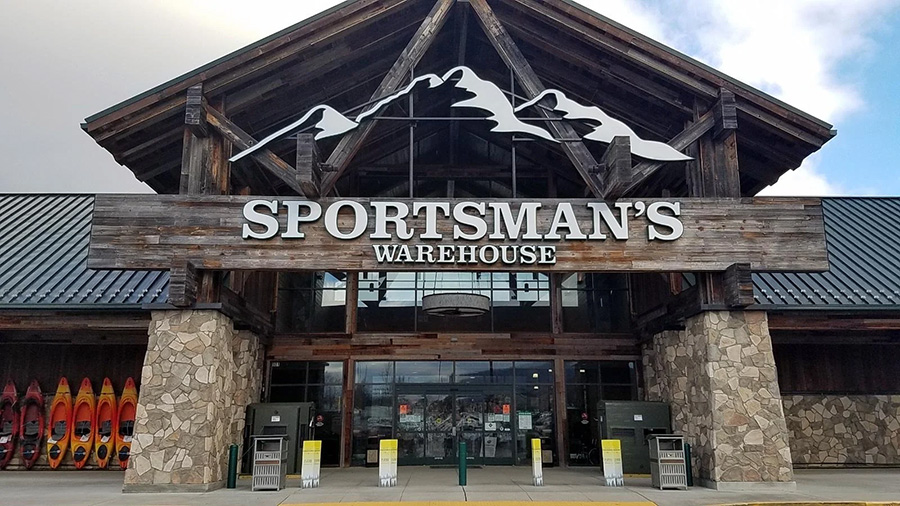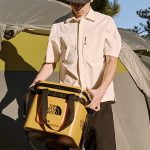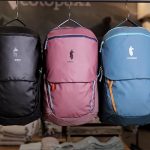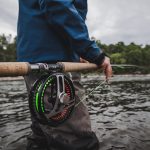Sportsman’s Warehouse Holdings, Inc. CEO Paul Stone opened the company’s second quarter conference call with analysts sharing that his primary focus since joining the company in November has been on revitalizing the company as a leading specialty retailer.
“Our mantra, which forms the foundation of our company and drives our mission, is great gear and great service,” he noted. “Initially, we concentrated on the great gear aspect, addressing distressed and slow-moving inventory, phasing out low-selling brands and refining our product assortments. This strategy aimed to free up capital tied to underperforming inventory, enabling us to invest in newness and core merchandise that aligns with our business and resonates with our customers.”
Stone said the supporting foundational element is great service.
“I’ve spent my entire 35-year career running all levels of store operations and cannot emphasize enough the importance of service, especially for our unique business,” he continued. “We know customers have a choice when they shop. Our competitive difference and the way we win customers will be because of our great service. In the second quarter, we implemented a culture change in all our stores. We now refer to our employees as outfitters versus simply associates.”
Based on his comments, it almost sounds like the outdoor specialty retailer plans to utilize in-store staff in a new way, almost as a personal shopper assistant for outfitting customers with gear.
“Many of our talented outfitters are also passionate outdoor enthusiasts and have a natural affinity with our customers,” Stone said. “We want them to share more of their local expertise and experiences rather than focusing on in-store tasks. We expect them to evaluate the customer’s outdoor needs and outfit them with merchandise in all departments throughout the store. While it may sound simple, this change is a significant shift in how our stores have historically operated.”
He went to say that while they are encouraged by the progress, they are still in the early innings of the business reset and transformation.
Second Quarter Results
Net sales for the second quarter were down 6.7 percent to $288.7 million, compared to $309.5 million in the prior-year second quarter, said to be down primarily due to lower demand across most product categories and a decline in store traffic resulting from the continued impact of “consumer inflationary pressures on discretionary spending.” The decline was said to be partially offset by increased same-store sales growth in the retailer’s Fishing department and the opening of six new stores since the end of the year-ago Q2 period.
Same-store sales decreased 9.8 percent compared with last year.
“While comp sales were down each month during Q2, we were encouraged to see improving trends each month as we moved through the quarter,” Stone noted. “Our sales continue to reflect the challenging macroeconomic environment and a consumer whose discretionary spending remains under pressure.”
Stone said all departments saw same-store sales decline except the Fishing department.
“Similar to the last quarter, all departments except fish outpaced the decrease in year-over-year inventory levels and we are executing strategically to end the summer season with clean inventory in each of these departments,” he shared. “This will provide us the open-to-buy dollars needed to invest in in-depth with key vendors, putting us in a much better position for the back half of the year.”
The Hunting category was reportedly down 13 percent in the quarter, but also saw improved month-to-month trends during the period.
“Ammunition is one of the key store traffic drivers with a consumer who is sensitive to price right down to the price per round,” Stone said. “To stay market competitive, we made strategic buys and priced for sales to win in this key category. While we believe this will drive sales and traffic, this will be a headwind to our ammunition margins in the back half of the year.”
He also noted that in mid-June, the company made a strategic shift to focus more of its promotional efforts on firearms and ammunition, its two largest categories to drive sales and online traffic.
“Given that our customer is shopping for value, it was important that we make the necessary adjustments to strategically target and promote hot buys to win on price,” Stone said.
Fishing comp sales were up about 6 percent for the quarter, with relatively consistent growth across all of our regions, according to the CEO.
“This growth highlights the importance of having the right merchandise position and ready early in the season and in-depth to be successful and capture additional market share. This is the merchandising roadmap we’ve implemented as we buy into the seasons in all of our departments,” he explained.
E-commerce driven sales were reportedly up about 3 percent in the second quarter, driven by sales from the Hunting and Fishing departments, and comprised 19 percent of total sales.
“To reiterate, we are in the early innings of this turnaround and are building out the necessary tools and skills to successfully transform this company,” Stone cautioned.
It appears that some of the work the retailer did to clean up the inventory overhang situation may have cut into sales for the quarter
“Frankly speaking, the first half of the year, we ran inventory too low and did not invest in the right amount of inventory, particularly in our core products,” Stone admitted. “This further pressured our sales given we did not have the appropriate depth in core items in most of our departments. As we move through the back half of 2024, our stores for the first time in years will be assorted with new seasonal merchandise and with depth. Additionally, we are making an incremental $20 million investment into new and core inventory, focused on products for our Hunting department, which we believe will help drive additional top-line results.”
First Half Year-to-Date Summary
- Net sales were $533.0 million, a decrease of 7.6 percent year-over-year (y/y) in the 2024 first half (H1) versus the first half last year.
- Same-store sales decreased 11.5 percent y/y compared to the first six months of fiscal year 2023.
- Gross profit was $163.8 million, or 30.7 percent of net sales, in H1, compared to $180.9 million, or 31.3 percent of net sales for the first six months of fiscal 2023.
- SG&A expenses decreased to $188.8 million, or 35.4 percent of net sales, in H1, compared with $201.3 million or 34.9 percent of net sales for the first six months of fiscal year 2023.
- Net loss was $24.0 million in the first half, compared to net loss of $18.9 million in the prior-year H1 period.
- Adjusted net loss was $23.1 million in H1, compared to an Adjusted net loss of $16.4 million in the fiscal year 2023 H1 period.
- Adjusted EBITDA was negative $1.3 million in the first half, compared to $3.1 million in the prior-year H1 period.
- Diluted loss per share was 64 cents in H1 2024, compared to diluted loss per share of 50 cents in H1 2023.
- Adjusted diluted loss per share was 61 cents in the 2024 first half, compared to Adjusted diluted loss per share of 44 cents in the prior-year first half period.
Income Statement Summary
Gross margin for the second quarter was 31.2 percent of sales, compared to 32.6 percent in the prior-year Q2 period. This reduction as a percentage of sales was said to be largely driven by increased costs associated with shrink as SPWH revamped its methodology in the quarter to better align counts with higher velocity SKUs and count more frequently in order to ensure better inventory accuracy as it focused on utilizing every dollar of inventory.
“We expect that shrink will continue to be a headwind in the back half of 2024 with these methodology improvements,” offered company CFO Jeff White. “Additionally, in an effort to end the summer season with clean inventory, we marked down seasonal goods, primarily in the apparel and camping departments, and we’re pleased with the results of these efforts.”
As a percentage of net sales, SG&A expense was 32.7 percent compared to 33.1 percent in the second quarter last year. In absolute dollars, SG&A was down $8 million year-over-year, which includes expenses from six additional stores, reflecting cost cutting and expense management efforts implemented during the second quarter of last year.
“We continue to closely manage overall payroll expenses with that line item down $5.7 million compared with the prior-year’s second quarter,” White noted. “On a per store basis, SG&A dollars in Q2 were down 12.9 percent versus Q2 of 2023. We will continue to look for areas of the business where we can reduce expenses, simplify the business and drive top-line growth.”
The net loss for the second quarter was $5.9 million, a loss of 16 cents per diluted share, compared with a net loss of $3.3 million, or a loss of 9 cents per diluted share, in the the prior-year Q2 period.
The Adjusted net loss in the second quarter was $5.3 million, or a loss of 14 cents per diluted share, compared with Adjusted net loss of $1.6 million, or a loss of 4 cents per diluted share, in the second quarter of the prior year.
Adjusted EBITDA was $7.4 million for the second quarter, compared with adjusted EBITDA of $10.9 million in the second quarter of 2023.
Balance Sheet Summary
Total inventory at the end of the second quarter was $363.4 million, compared to $457.2 million at the end of the second quarter of 2023, reflecting a decrease of $93.8 million or 23.8 percent on a per store basis. This was said to be down approximately $28 million from the end of Q1 2024.
“We expect to quickly increase our inventory during Q3 to ensure that we have the depth and core items and make a strategic investment in inventory of approximately $20 million into certain products that resonate with our customers to drive incremental top-line, particularly around the holiday shopping season,” CFO White commented.
“As Paul mentioned in his prepared remarks, it is critical that we have our depth in our core products like certain firearms and key ammo calibers and in our high volume seasonal merchandise to ensure our customer has a positive shopping experience,” White noted. “We also have certain stores that are running too lean on inventory, which we believe is a factor influencing our soft year-over-year sales.”
With depth in core products, and having the right assortment of new merchandise, White said the company believes it will start to see improvements in comp sales in the back half of 2024.
“While we plan to make these inventory investments in Q3 and early Q4, we expect a clean sell-through of merchandise ending the year with total inventory between $335 million and $350 million,” White said.
Sportsman’s Warehouse ended the second quarter with a total debt balance of $155.1 million and total liquidity of approximately $100 million.
“While the company is not yet generating profits, we expect positive free cash flow for the full year 2024, which will go directly to pay down debt,” White said.
White said the company was “pleased” to partner with Pathlight Capital and Wells Fargo to secure a $45 million term loan, bolstering its balance sheet and overall liquidity.
“This will allow us the flexibility needed to strategically invest in inventory and further execute our ongoing reset of the business,” he said. “We remain confident in the strength of the balance sheet and our strong vendor support. Our capital allocation strategy continues to prioritize the pay down of debt as our primary use of excess cash.”
Outlook
Given the persistent macroeconomic pressures weighing on consumer discretionary spend, the company said it is taking a more cautious view on the back half of 2024 and updated its full year guidance.
The company is now estimating that:
- Fiscal 2024 net sales will be in the range of $1.13 billion to $1.17 billion;
- Adjusted EBITDA for fiscal 2024 to be in the range of $20 million to $35 million, which at the low end still yields positive free cash flow; and
- CapEx for 2024 to be between $20 million and $25 million, relating to technology investments to improve store service and merchandising productivity, as well as normal store maintenance.
“Again, to reiterate my earlier comments, even at the low end of our range, we expect to generate positive free cash flow during 2024, which will be used to pay down our debt,” White concluded.
Image courtesy Sportsman’s Warehouse
















